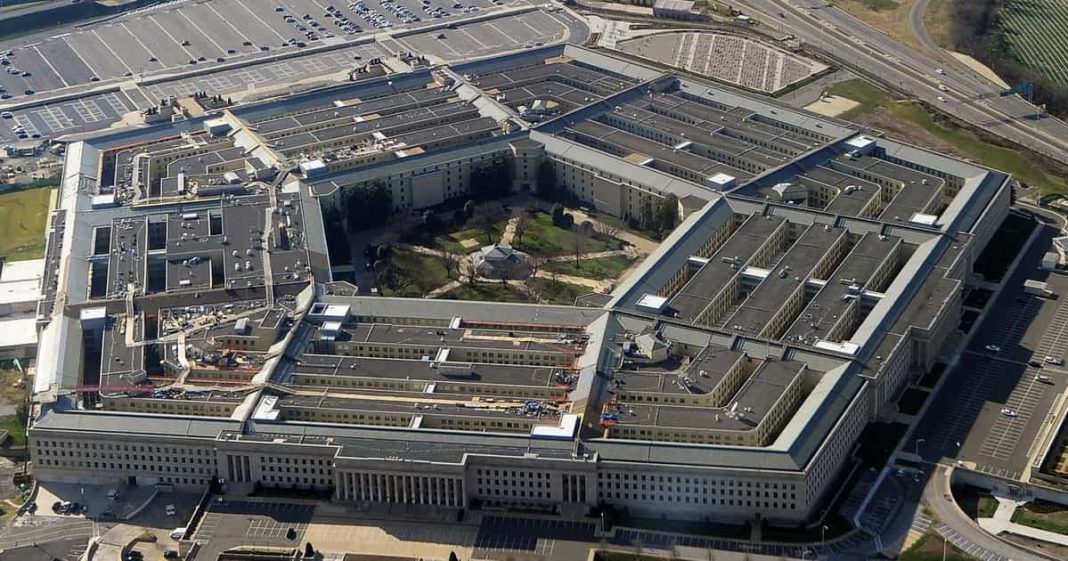The United States in its new National Security Strategy (NSS) and National Defense Strategy (NDS) documents declared China as the most challenging actor against the country’s interest in general and in Asia Pacific in particular. The US remained the sole superpower of the world almost for three decades. The rise of China and the resurgence of other great powers such as Russia are challenging this trait of the US. The NSS 2022 considers this decade as a deciding one. It shows the seriousness of the country towards the challenge of rising China and its increased influence in the Asia Pacific. The US intended in its previous documents that the country would be adopting the approach of “coopetition” which meant that where necessary the US will cooperate with China and at the same time compete where it must do. But the recent document declares that the United States is in strategic competition with China in multiple domains.
Read more: US ignores Pakistan in its National Security Strategy 2022
Previously the US unilaterally balanced the smooth rise of China. However, recently the country is shifting towards the approach of integrated deterrence. Colin Kahl, the undersecretary of defense for policy, brought forward the concept in a Defense One Outlook 2022 summit. Kahl elaborated “In terms of integrated … we mean, integrated across domains, so conventional, nuclear, cyber, space, informational,”. He discussed “[It is also] integrated across theaters of competition and potential conflict [and] integrated across the spectrum of conflict from high-intensity warfare to the gray zone”. The concept also means integrating all the components of national power specifically it means being “integrated across our allies and partners, which are the real asymmetric advantage that the United States has over any other competitor or potential adversary.”
Read more: US Strategy: From Asia Pacific to Indo-Pacific
In this vein, the US has emboldened its alliances in the Asia Pacific. The revival of Quadrilateral Security Dialogue (QUAD) and defense agreements such as (AUKUS) are showing that the US is on the path of integrated deterrence. Through this approach, the US is also strengthening the defense capabilities of its partners and allies. This way the US is creating integrated deterrence in the Asia Pacific. There can be multiple reasons behind this approach. The obvious ones are that Washington wants to share the burden of containing China with its partners as well as heighten the stakes for leaders in Beijing. One another reason for adopting this approach is to deny rapid fait accompli to the adversaries against the US partners where the US cannot show up quickly. So basically the new thing in this approach is emboldening the defense of the partners against the adversaries. Empowering the partner states for tackling the perceived Chinese threat.
Read more: Synopsis of Global Security Dynamics
This approach has implications for the security of China. Beijing now will not only have to cope with the challenge of the US but also its partners who are potentially enhancing its defense capabilities. Japan, South Korea, and Australia are the countries that have started investing in their defense forces. This has exacerbated the security situation for China in the region. China’s strategic environment is compelling the country to be taking extra measures for its security. Beijing is already concerned about securing sea lanes communication and disputed territories in South China and East China Seas.
In addition to that, the country is facing the challenge of heavy US military presence in the region. The Chinese problems will increased by this approach of integrated deterrence adopted by the US. Japan is a latent great power while South Korea and Australia are potential great powers. To put it in simple words China will now be facing multiple challengers instead of the US only. Chinese threat perception has changed over the years vis a vis the US actions in the region. As a result, China has invested in its defense forces. It has worked heavily on its Anti Access/Area Denial (A2AD) capabilities to counter the threat of the US. To cope with the US integrated deterrence approach China will have to take further measures. It will have to create further space for military spending in its national budget.
Read more: The Rise of China and the US Strategy in the Asia-Pacific
This scenario destabilizes the strategic stability in the Asia Pacific region while increasing the arms race. This in turn creates more chances of war which is consequential for peace in the region. In the age of sophisticated weaponry and nuclear arsenal, the war would be catastrophic which no one has ever imagined. The increased arms race will diverge the bulk of budgets from economic developments toward military spending. Resultantly, economic activities will be halted and the region will head toward chaos and ultimate destruction.
Therefore, all the countries of the region must have economic activities and prosperity in focus while engaging in any arms race against the rival countries. Peace must be the priority which is the prerequisite for the economic development and prosperity of the region. The countries of the region must work collectively towards shared challenges such as climate Change.
The author is a political analyst, having completed his MPhil from Quaid-I-Azam University Islamabad, in Defense and Strategic Studies. The views expressed in this article are the author’s own and do not necessarily reflect the editorial policy of Global Village Space.














